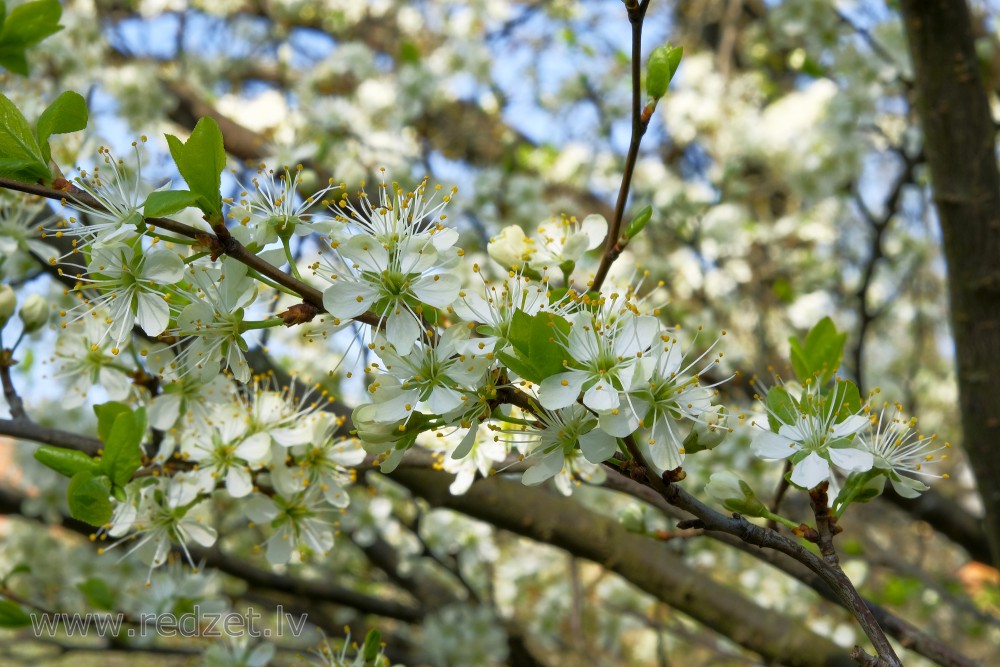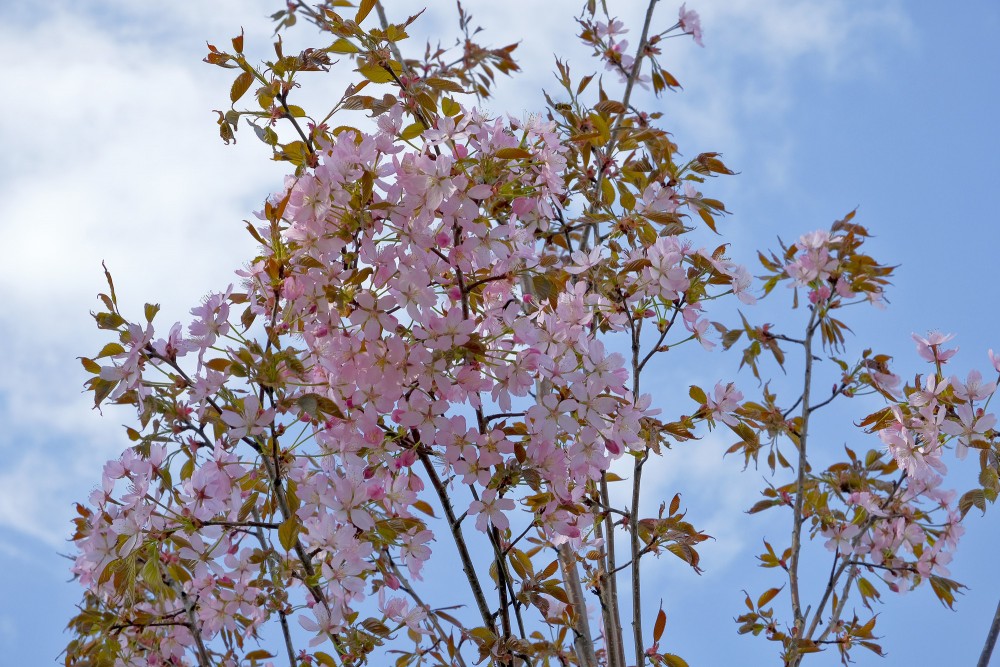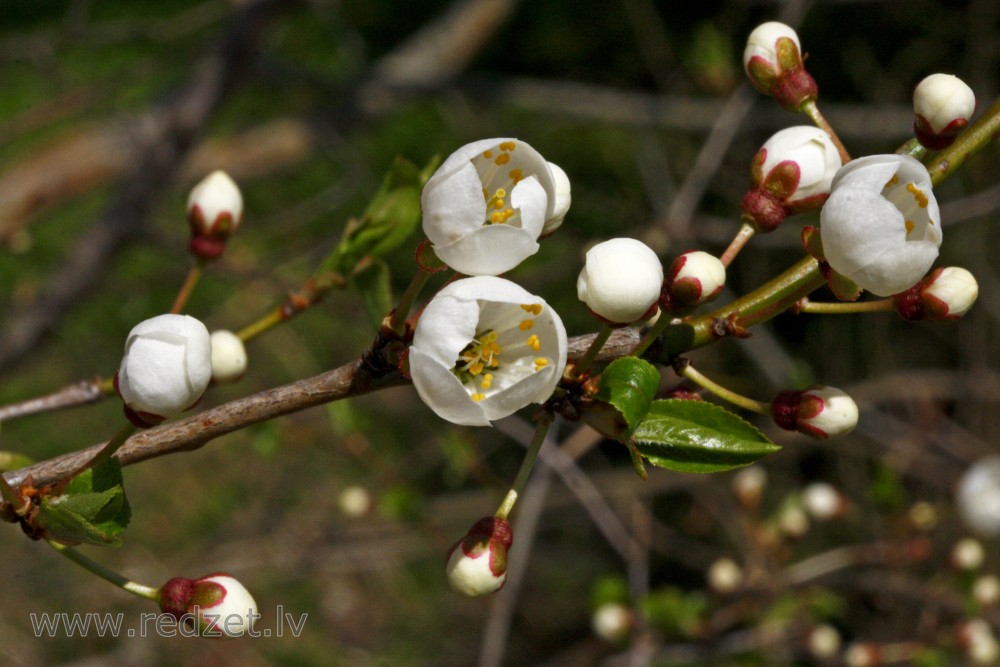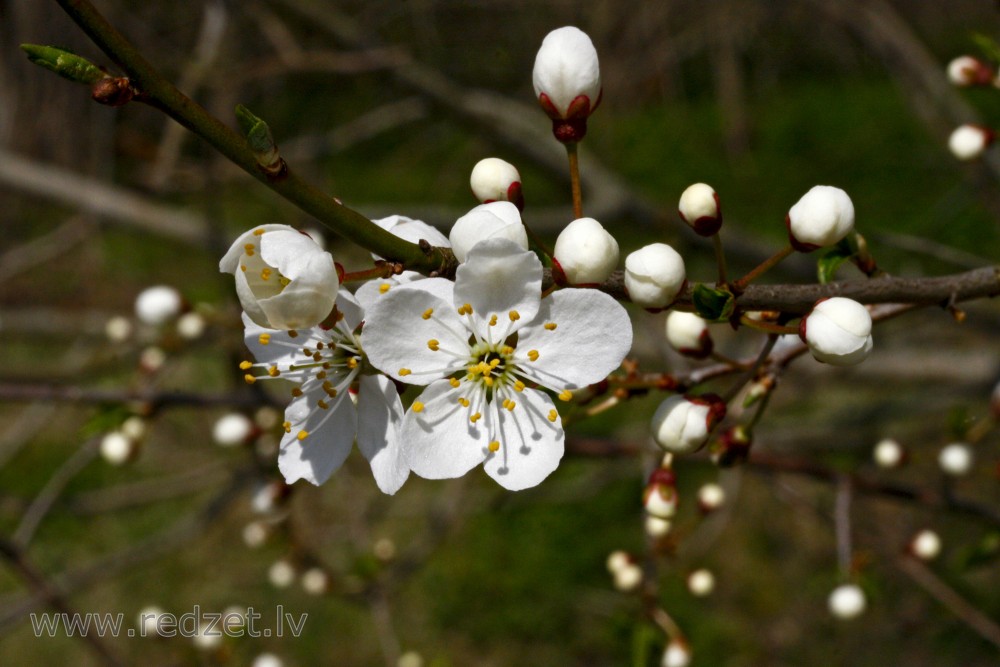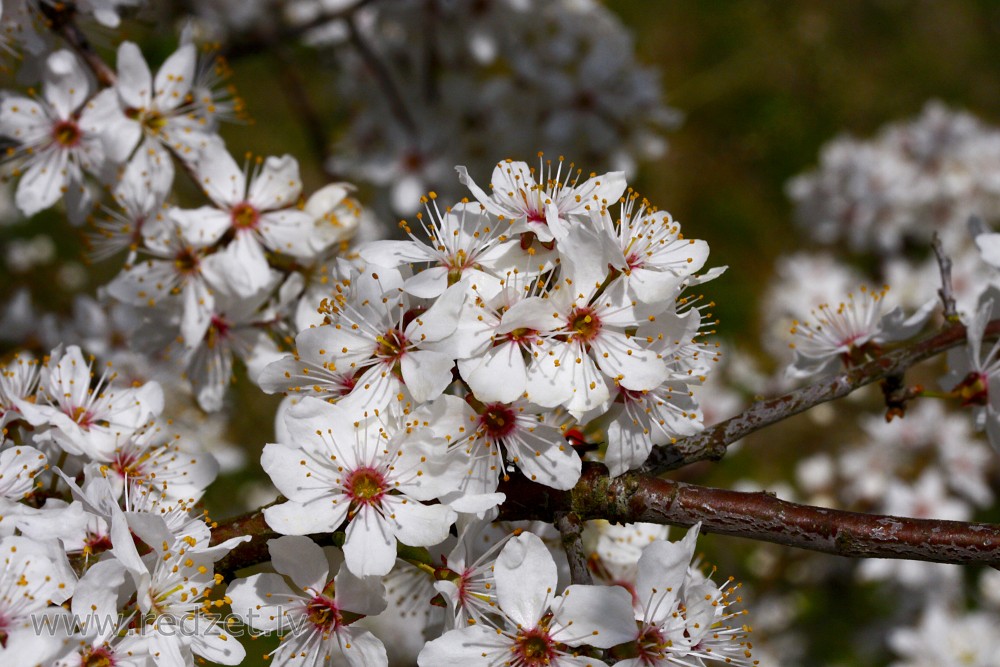Cherry
A cherry is the fruit of many plants of the genus Prunus, and is a fleshy drupe (stone fruit).
The cherry fruits of commerce usually are obtained from cultivars of a limited number of species such as the sweet cherry (Prunus avium) and the sour cherry (Prunus cerasus). The name 'cherry' also refers to the cherry tree and its wood, and is sometimes applied to almonds and visually similar flowering trees in the genus Prunus, as in "ornamental cherry" or "cherry blossom". Wild cherry may refer to any of the cherry species growing outside cultivation, although Prunus avium is often referred to specifically by the name "wild cherry" in the British Isles.
Botany
Many cherries are members of the subgenus Cerasus, which is distinguished by having the flowers in small corymbs of several together (not singly, nor in racemes), and by having smooth fruit with only a weak groove along one side, or no groove. The subgenus is native to the temperate regions of the Northern Hemisphere, with two species in America, three in Europe, and the remainder in Asia. Other cherry fruits are borne on racemes and called bird cherries.
History
Etymology and antiquity
The English word cherry derives from Old Northern French or Norman cherise from the Latin cerasum, referring to an ancient Greek region, Kerasous (Κερασοῦς) near Giresun, Turkey, from which cherries were first thought to be exported to Europe. The indigenous range of the sweet cherry extends through most of Europe, western Asia, and parts of northern Africa, and the fruit has been consumed throughout its range since prehistoric times. A cultivated cherry is recorded as having been brought to Rome by Lucius Licinius Lucullus from northeastern Anatolia, also known as the Pontus region, in 72 BC.
Cherries were introduced into England at Teynham, near Sittingbourne in Kent, by order of Henry VIII, who had tasted them in Flanders.
Cherries arrived in North America early in the settlement of Brooklyn, New York (then called "New Netherland") when the region was under Dutch sovereignty. Trades people leased or purchased land to plant orchards and produce gardens, "Certificate of Corielis van Tienlioven that he had found 12 apple, 40 peach, 73 cherry trees, 26 sage plants.., behind the house sold by Anthony Jansen from Salee [Morocco, Africa] to Barent Dirksen [Dutchmen],... ANNO 18th of June 1639."
Cultivation
The cultivated forms are of the species sweet cherry (P. avium) to which most cherry cultivars belong, and the sour cherry (P. cerasus), which is used mainly for cooking. Both species originate in Europe and western Asia; they usually do not cross-pollinate. Some other species, although having edible fruit, are not grown extensively for consumption, except in northern regions where the two main species will not grow. Irrigation, spraying, labor, and their propensity to damage from rain and hail make cherries relatively expensive. Nonetheless, demand is high for the fruit. In commercial production, sour cherries, as well as sweet cherries sometimes, are harvested by using a mechanized 'shaker'. Hand picking is also widely used for sweet as well as sour cherries to harvest the fruit to avoid damage to both fruit and trees.
Common rootstocks include Mazzard, Mahaleb, Colt, and Gisela Series, a dwarfing rootstock that produces trees significantly smaller than others, only 8 to 10 feet (2.5 to 3 meters) tall. Sour cherries require no pollenizer, while few sweet varieties are self-fertile.
A cherry tree will take three to four years once it's planted in the orchard to produce its first crop of fruit, and seven years to attain full maturity.
Growing season
Like most temperate-latitude trees, cherry trees require a certain number of chilling hours each year to break dormancy and bloom and produce fruit. The number of chilling hours required depends on the variety. Because of this cold-weather requirement, no members of the genus Prunus can grow in tropical climates. (See "production" section for more information on chilling requirements)
Cherries have a short growing season and can grow in most temperate latitudes. Cherries blossom in April (in the Northern Hemisphere) and the peak season for the cherry harvest is in the summer. In southern Europe in June, in North America in June, in England in mid-July, and in southern British Columbia (Canada) in June to mid-August. In many parts of North America, they are among the first tree fruits to flower and ripen in mid-Spring.
In the Southern Hemisphere, cherries are usually at their peak in late December and are widely associated with Christmas. 'Burlat' is an early variety which ripens during the beginning of December, 'Lapins' ripens near the end of December, and 'Sweetheart' finish slightly later.
Pests and diseases
Generally, the cherry can be a difficult fruit tree to grow and keep alive. In Europe, the first visible pest in the growing season soon after blossom (in April in western Europe) usually is the black cherry aphid ("cherry blackfly", Myzus cerasi), which causes leaves at the tips of branches to curl, with the blackfly colonies exuding a sticky secretion which promotes fungal growth on the leaves and fruit. At the fruiting stage in June/July (Europe), the cherry fruit fly (Rhagoletis cingulata and Rhagoletis cerasi) lays its eggs in the immature fruit, whereafter its larvae feed on the cherry flesh and exit through a small hole (about 1 mm diameter), which in turn is the entry point for fungal infection of the cherry fruit after rainfall. In addition, cherry trees are susceptible to bacterial canker, cytospora canker, brown rot of the fruit, root rot from overly wet soil, crown rot, and several viruses.
en.wikipedia.org
